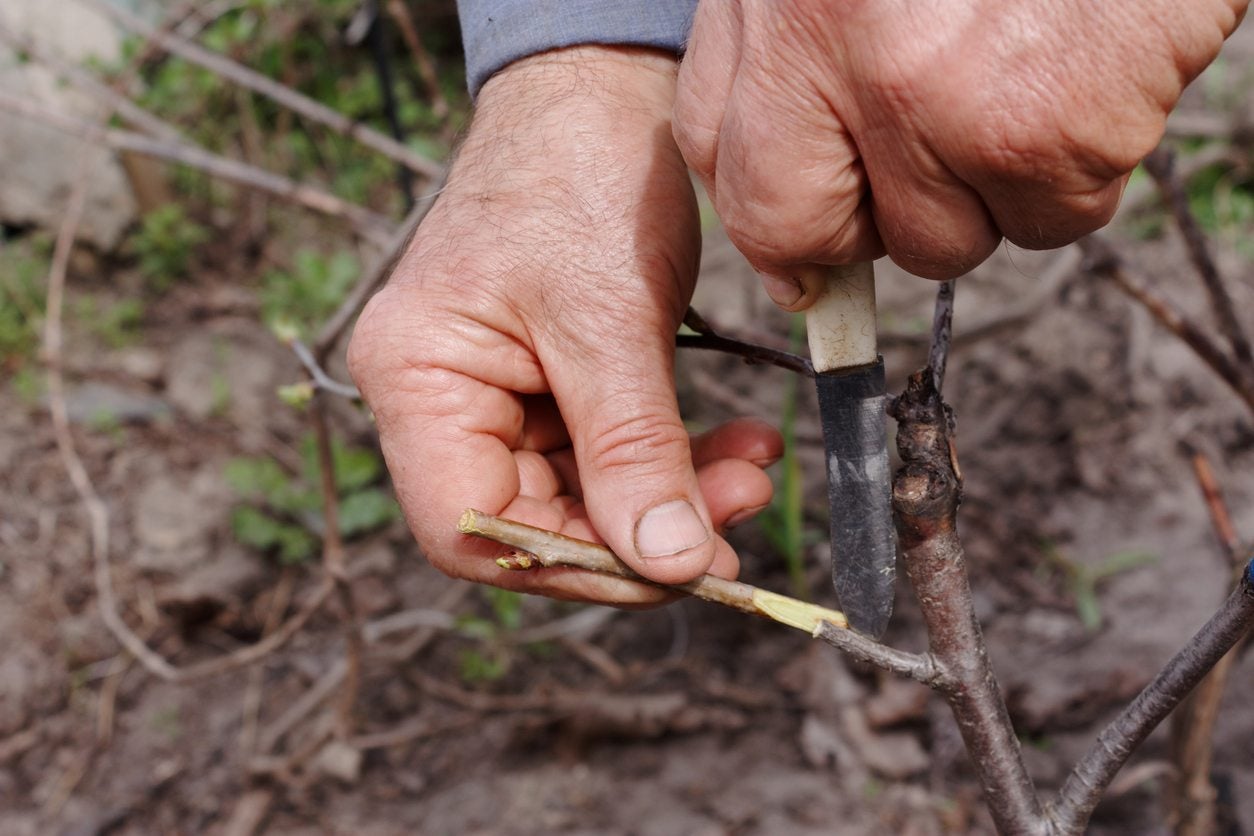WHAT IS ROOTSTOCK? HOW AND WHY TO USE ROOTSTOCK
It’s fascinating how rootstock for grafting results in stronger trees that bear better fruit. You may not be a professional grower, but knowing how this works will make you a better-informed consumer.

Rootstock Basics – Learn About Rootstock For Grafting
Many cultivated fruit trees are pieced together like a jigsaw puzzle. Through a process called grafting, the grower unites a stem and canopy of a desirable cultivar with the stem and roots of a hardy, cold-tolerant cultivar, called the rootstock. Rootstock grafting allows the grower to build the tree to the best possible specifications for their climate and taste. To learn more about fruit tree rootstocks and how they are selected for grafting, read on.
What is Rootstock?
A rootstock is the part of a grafted tree that contains the roots. A rootstock for grafting is selected according to the climate of the region and the grower’s desires. In cold-winter areas, it’s important to use cold-hardy grafting rootstocks so that the fruit trees survive the annual temperature drop. Grafting also accommodates size restrictions; a gardener with a small backyard might select a fruit tree with a semi-dwarf or dwarf rootstock.
Benefits of Using Rootstock
Since most trees in the wild - and most plants - are grown from seed, it’s natural to think that fruit trees, too, can be grown from seed. But this is not the case with cultivated fruit trees; they are grown from grafted rootstocks. This is the only way that it’s possible to have the variety of fruit you want.
Fruit trees are not “true-to-type” when grown from seed. Seeds from a Bartlett pear tree won’t grow to produce Bartlett pears. Rather, the seedling will be a unique variety. This is also true of seeds from other cultivated fruit trees.
This is a primary reason fruit tree rootstocks are used. But it’s not the only one. With rootstocks, you can select the size of the tree as well as its cold hardiness. Rootstocks can also impact disease resistance and the age at which a tree will fruit. For example, apple trees grown on dwarf rootstocks can bear fruit within three years of planting, while those grown on semi-dwarf rootstocks don’t bear fruit until four or five years after planting, and standard trees can take as long as 10 years.
How to Use Rootstock
Rootstocks give you choices when it comes to cultivated fruit trees. But choices are only useful if you know the factors that impact those choices. Match the rootstock to your specific orchard characteristics. Before you go out to buy a fruit tree, learn about your climate including your hardiness zone. Is your region one with plenty of rain? Or do you need the most drought-tolerant tree possible?
Another aspect to take into account is which diseases are prevalent in your area when it comes to a particular type of tree. You may be able to find a resistant rootstock. You can ask someone for assistance at the garden store to find out what else to take into consideration.
Sign up for the Gardening Know How newsletter today and receive a free copy of our e-book "How to Grow Delicious Tomatoes".
Grafting Rootstock
Although it is possible to graft a fruit tree cultivar yourself, grating rootstock is often left to the professionals. When you buy a young fruit tree, it is almost always already grafted. The label information should tell you the cultivar of the scion as well as the rootstock variety.
If you are wondering how this is done, it’s a little like magic. Rootstocks start their lives as complete fruit trees, trees with a single trunk and a well-developed root system. Most rootstocks will produce some fruit if left to grow naturally, but the fruit is often tiny with poor flavor. When one is selected to serve as the root system of a fruit tree, this is what happens. The grower selects a desirable cultivar that produces the kind of fruit (or flowers) that they want on the tree. Then they cut off shoots from that cultivar that have leaf buds on them. These are inserted under the bark of the rootstock and grow into the rootstock, creating an entirely different tree with the characteristics the grower prefers.

Teo Spengler is a master gardener and a docent at the San Francisco Botanical Garden, where she hosts public tours. She has studied horticulture and written about nature, trees, plants, and gardening for more than two decades, following a career as an attorney and legal writer. Her extended family includes some 30 houseplants and hundreds of outdoor plants, including 250 trees, which are her main passion. Spengler currently splits her life between San Francisco and the French Basque Country, though she was raised in Alaska, giving her experience of gardening in a range of climates.

